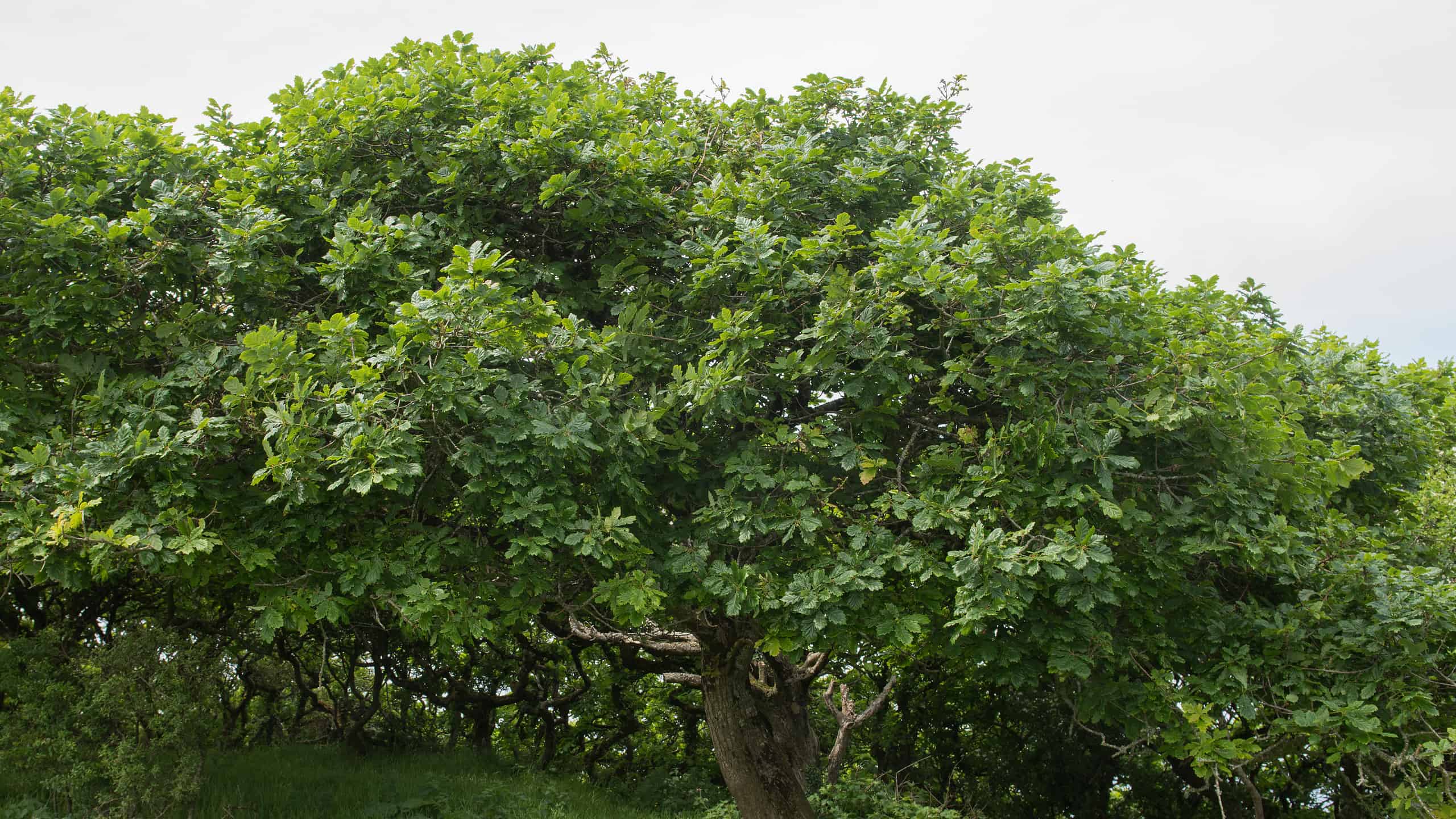Ireland is filled with hardy and beautiful trees. They are important to the environment and provide home, food, and shelter for the many animals living in the country. Not all trees though in Ireland are native to the land, and yet still thrive. For instance, there are only 28 native Irish tree species, but over 35 tree species grow in the country. So, which trees are native to Ireland, and what’s so interesting about them?
Follow along to learn about 10 incredible trees native to Ireland and their many uses.
1. Common Juniper Tree
The first incredible native Irish tree is the common juniper tree. This tree is an evergreen conifer prickly with beautiful foliage. The needles are grey-green, with silver undersides. Female common juniper trees produce blue berries. They grow in many environments but thrive in shallow soil and full sun. Common juniper trees are small compared to other trees in the same cypress family Cupressaceae. They reach between 33 feet to 53 feet tall and spread wide. Common juniper trees have the largest geographical range of any woody plant. You can see these trees throughout North America, Europe, and Asia. These trees also have many uses. For example, cones are used to flavor some gins and beers.
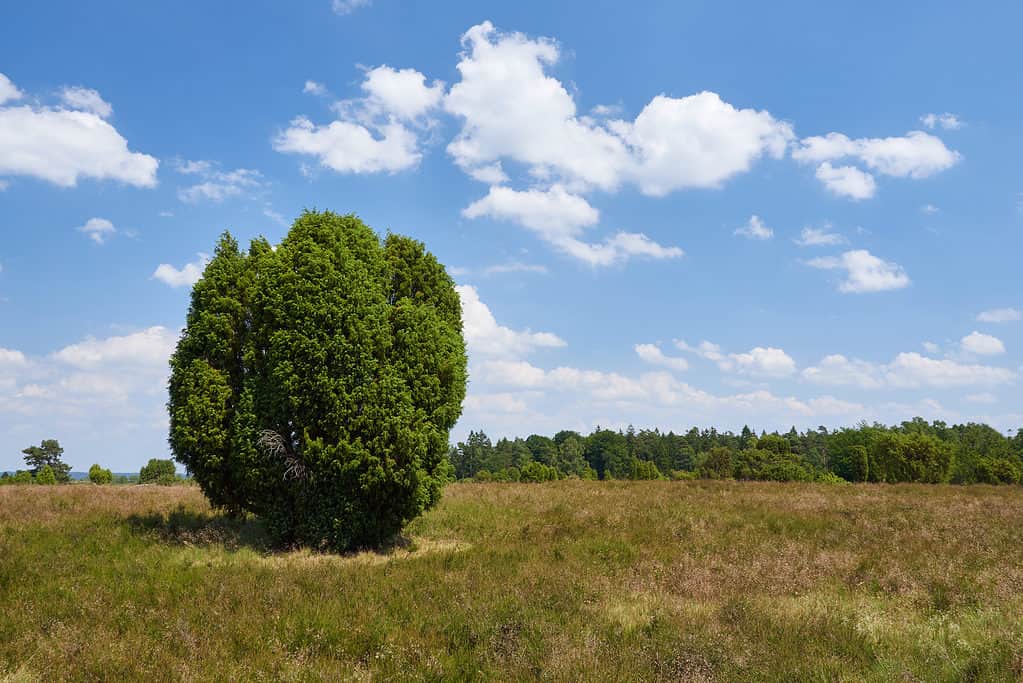
This tree is an evergreen conifer prickly with beautiful foliage.
©Thomas Marx/Shutterstock.com
2. Spindle Trees
Spindle trees, also known as European spindles and common spindles are tall flowering plants. They are native to much of Europe. Spindle trees are best found along the edges of forests. These small trees typically grow up to 10 feet tall but can reach impressive heights of 33 feet. The leaves are short, rarely growing over 3 inches long and 1 inch across. Spindle trees produce beautiful leaves and flowers. The leaves change colors with the season from yellow-green to reddish-purple. This vibrant flowering plant also produces hermaphrodite flowers in late spring, pollinated by flying insects. These flowers grow in bundles of 3-8 small, yellowish-green cymes. Interestingly, the wood of spindle trees is tough and easy to sharpen. For years, spindle tree wood was used for making spindles.
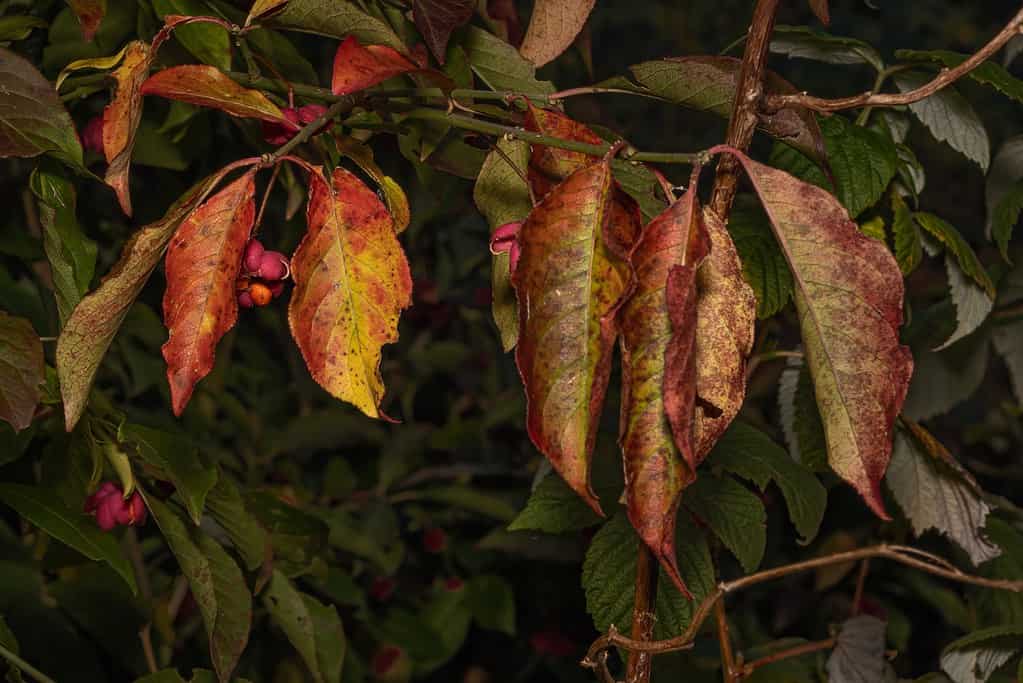
The
leaves change colors
with the season from yellow-green to reddish-purple.
©AnicaGDA/Shutterstock.com
3. Oak Sessile Trees
The next native Irish tree on our list is the oak sessile tree. It’s also commonly known as the Irish oak, Cornish oak, or durmast oak. This oak tree species has a wide native range and is found throughout most of Europe, Anatolia, and Iran. Oak sessile trees are so important to Ireland that it’s the country’s national tree. These large deciduous trees reach up to 66 to 131 feet tall. The leaves are long, sometimes reaching almost 6 inches.
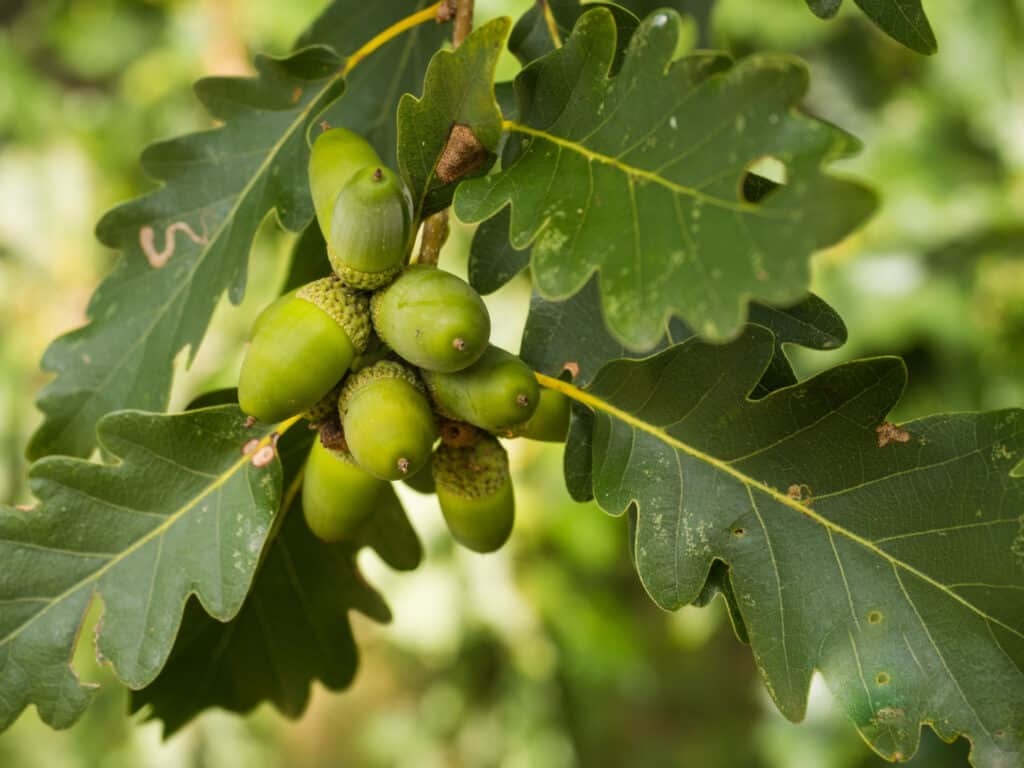
Oak sessile trees are so important to Ireland that it’s the country’s national tree.
©Hartmut Goldhahn/Shutterstock.com
4. European Holly Trees
Another tree native to Ireland is the European holly tree, sometimes also called the Christmas holly, common holly, or English holly. It’s a flowering plant with a native range in northwest Africa, southwest Asia, and western and southern Europe. They are old trees with many uses. European holly trees are tall, sometimes surpassing 82 feet. They also produce beautiful white, four-lobed flowers and heavily rely on bees for pollination. Holly berries are bitter until they ripen in winter and are mainly eaten by birds and rodents. Although European holly trees aren’t native to North America, they thrive in the United States. They are listed as an invasive tree species along the west coast of the United States. There are numerous cultivars that are planted in many parks and public spaces.
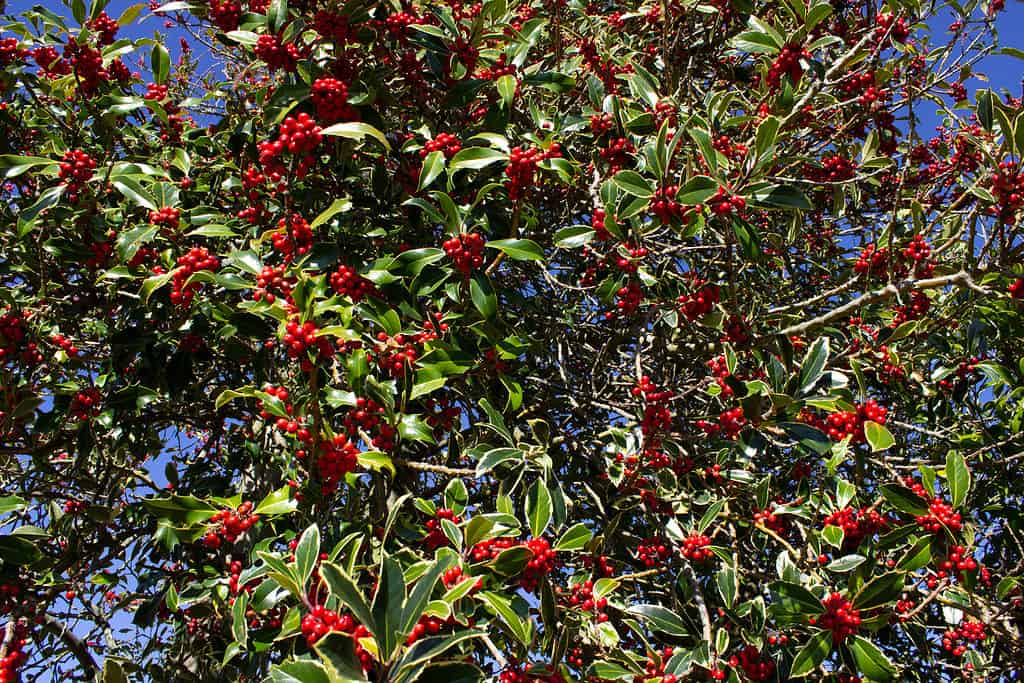
European holly trees are tall, sometimes surpassing 82 feet.
©EveTravels/Shutterstock.com
5. Common Alder Trees
Common alder trees have many names, including alder, black alder, and European black alder. They are native to most of Europe, northern Africa, and parts of Asia. Common alder trees thrive in many different conditions, including poor soil. They are very important trees for wildlife and serve as shelters for small animals. Some insects and fungi rely on common alder trees for their survival. These trees are tall and can reach up to 121 feet. However, most common alder trees only grow between 66 to 98 feet. While not native to North America or South Africa, this tree species has been introduced and is considered invasive. Common alder trees are strong and useful. They are especially planted in flood-prone areas and river banks since they purify water and assist in flood control.
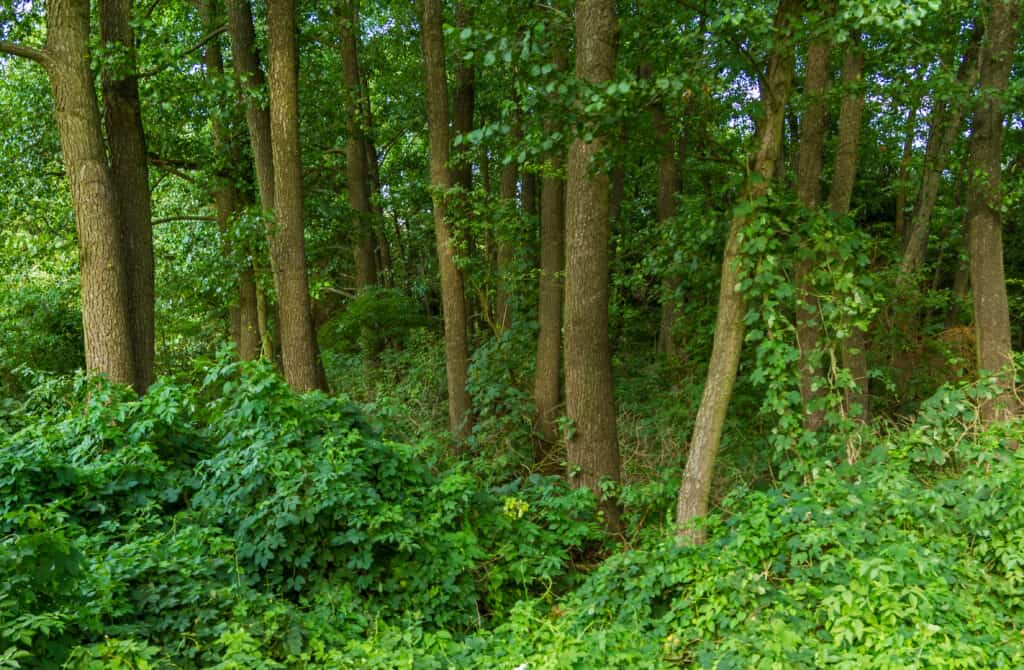
Alder trees are very important trees for wildlife and serve as shelters for small animals.
©Ihor Hvozdetskyi/Shutterstock.com
6. Cherry Bird Trees
The next native Irish tree on our list is the cherry bird tree. This tree is stunning and produces light white flowers. It’s considered a small tree or a large and wide shrub, which grows up to 52 feet tall. Cherry bird trees are native to northern Europe and northern and northeast Asia. Although it’s not native to the United States, some places grow cherry bird trees as ornamental plants. There are two varieties of the cherry bird tree, but only one is native to Ireland, the European bird cherry. While the fruit is rarely eaten today, cherry bird berries were likely staples in people’s diets about 2500 years ago. Bird cherry pie is also made from cherry bird trees in Russia.

This tree is stunning and produces light white flowers.
©Juki247/Shutterstock.com
7. Elder Trees
Native elder trees in Ireland are very important to wildlife. These trees also add pops of color and fragrance to any space with their large clusters of many small white flowers. Many pollinating insects, like bees and butterflies, flock to elder tree flowers during spring. The flowers and berries of this plant are also edible. Elderberries are used in wines and jellies. This tree also has a lot of meaning in Ireland. In Irish folklore, elder trees are to be respected and never cut down.
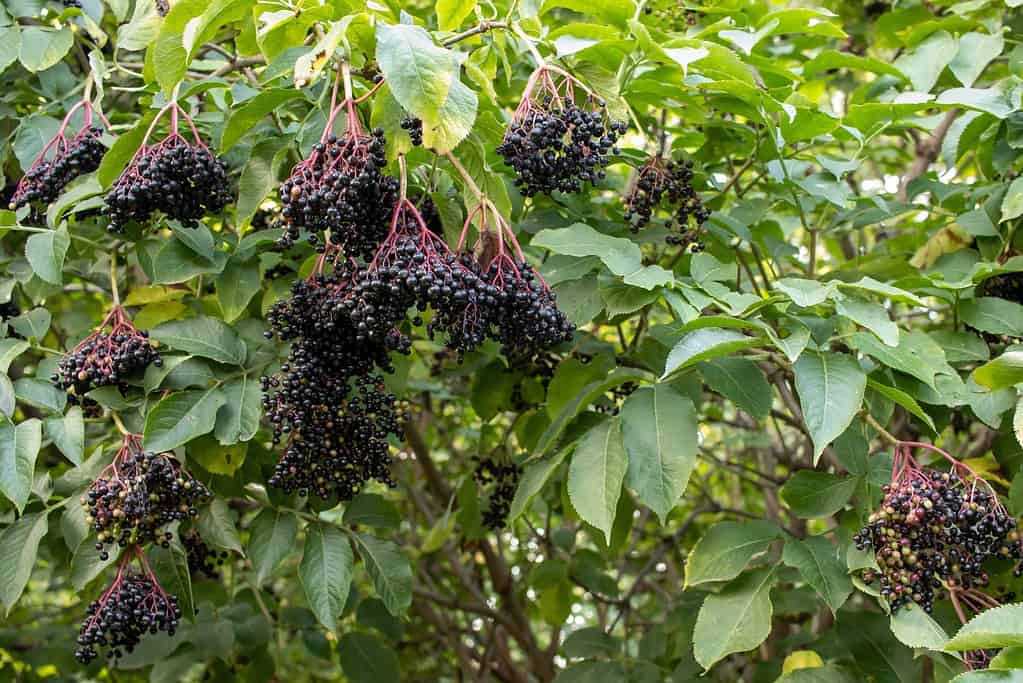
Many pollinating insects, like bees and
butterflies
, flock to elder tree flowers during spring.
©Juver/Shutterstock.com
8. Common Ash Trees
Common ash trees are one of the tallest and most common trees in Ireland. They are native throughout Europe, with their spread ending in the Trondheimsfjord region of Norway. While common ash trees are only native to some parts of Europe, this tree has been introduced and cultivated in the United States, Canada, and New Zealand. Common ash trees are deciduous trees growing 39 to 59 feet tall. Although common ash trees thrive in all soil types, they prefer moist soil. In the best growing conditions, some common ash trees can surpass 149 feet tall.

Common ash trees are deciduous trees growing 39 to 59 feet tall.
©Smileus/Shutterstock.com
9. Common Aspen Trees
The common aspen tree, also known as quaking aspen, Eurasian aspen, or European aspen, is native to cool temperate regions of Europe and Asia. Not only can you find common aspen trees in Ireland but also in Russia, Iceland, Japan, North Korea, and Scandinavia. These trees are tall and thick, usually growing up to 130 feet tall and 33 feet wide. Common aspen trees can also have a trunk diameter of 3 feet and 3 inches. The leaves are round, long, and green. They are about 2-3 inches long. These trees are beautiful and have grey-green or grey-blue bark, which darkens as they age. They are similar to American aspen trees but have more coarsely toothed leaves. The wood from this tree is often used as lumber and matches. It’s also used to produce writing papers.

The wood from this tree is often used as lumber and matches. It’s also used to produce writing papers.
©iStock.com/Greg Meland
10. Common Hazel Trees
Last but not least, is the common hazel tree, which is native to Europe and western Asia. This important flowering shrub or small tree was previously grown as traditional field boundaries in lowland England. Common hazel trees are about 10 to 26 feet tall, but they can reach over 50 feet tall. The leaves of this tree are unique and covered in small hairs. These leaves also provide a lot of nutrition to some animals and insects like the Coleophora anatipennella and Alabonia geoffrella. The fruits are also consumed but by squirrels. The nuts are also grown and harvested for their edible seeds. Hazelnuts can be eaten raw, but are also sometimes roasted.
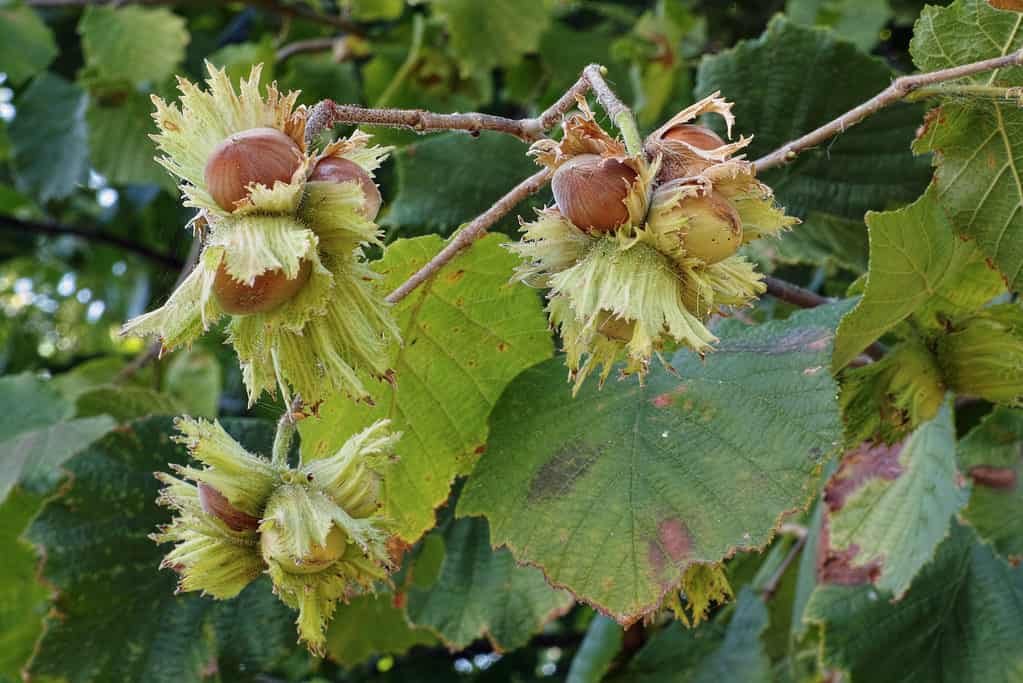
Hazelnuts can be eaten raw, but are also sometimes roasted.
©iStock.com/ffaber53
Thank you for reading! Have some feedback for us? Contact the AZ Animals editorial team.

